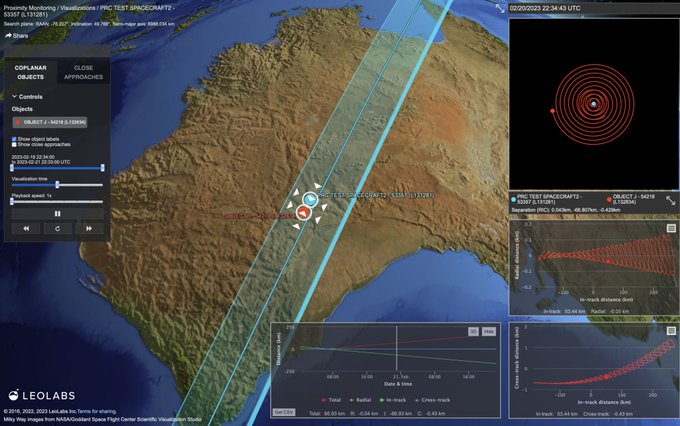Except for a congressman that sent me a text tied to this only this morning.China is paying Cuba to host a spy/eavesdropping facility in Cuba to monitor communications, phone calls and even satellite transmissions. How is that for a country that is just a competitor as Joe Biden tells us?
***
The second orbital mission of China’s robotic space plane has come to a close. It is called Known as Shenlong (“divine dragon”). It docked with or otherwise captured a separate object on multiple occasions, managed by China Aerospace Science and Technology Corporation.
The mysterious reusable vehicle touched down Monday (May 8) at the Jiuquan Satellite Launch Center in northwest China, wrapping up a 276-day mission to Earth orbit, according to China’s state-run Xinhua news agency.
“The success of the experiment marks an important breakthrough in China’s research on reusable spacecraft technologies, which will provide more convenient and affordable round-trip methods for the peaceful use of space in the future.”
The space plane launched from Jiuquan on Aug. 4, 2022, kicking off a mission short on details but long on intrigue.
On Oct. 31, for example, the vehicle ejected something into orbit. Some experts speculated that the object was a service module, possibly indicating that the space plane was getting ready to return to Earth.
Others posited that the new free flyer was a small satellite designed to monitor the Chinese space plane — perhaps the correct guess, given how much longer the robotic spacecraft stayed aloft.
Update ➡️ The PRC Test Spacecraft 2 (NORAD ID 53357) landed in the early hours ET on Monday, 8 May 2023.
Based on our observation data and confirmed by reports, the landing window was likely between 0018 – 0020 UTC. https://t.co/Xm5fQH2g65
— LeoLabs (@LeoLabs_Space) May 8, 2023
***
Experts think the Chinese space plane is likely similar to the Boeing X-37B, a U.S. space plane that debuted in 2010. Kevin Pollpeter, a research scientist at the Center for Naval Analyses, told Nature.com that the reveal of X-37B sparked concern within the Chinese government over the craft’s military potential. It’s possible that this spurred the country’s space program, which is closely tied to its military, to start developing its own version, Pollpeter said.
Like the X-37B space plane, the Chinese craft appears to be uncrewed and relatively small. It probably first flew in September 2020, making a short two-day stint into orbit before returning to the ground. Its most recent mission began in August 2022, when it took off on a Long March 2F rocket from the Jiuquan Satellite Launch Center in northern China, according to a report from the Washington, D.C.-based Center for Strategic and International Studies (CSIS). The exact purpose of the mission remains unclear.
According to the CSIS report, the craft released an “object” into orbit sometime in October. The object apparently disappeared in January, only to suddenly reappear on satellite tracking radar in March. Experts believe this could indicate that the plane has some sort of satellite removal capability, such as a robotic arm.
“[The Chinese] have been working a lot with robot arms in other contexts, like the Chinese space station,” Jonathan McDowell, an astrophysicist at the Harvard & Smithsonian Center for Astrophysics, told Nature.
If that’s the case, then the plane’s primary purpose might be to repair damaged satellites or remove orbital debris. However, this does not rule out military capabilities — either for the Chinese space plane or for the X-37B. Until more details come out, however, the best we can do is speculate. Source and more reading.






